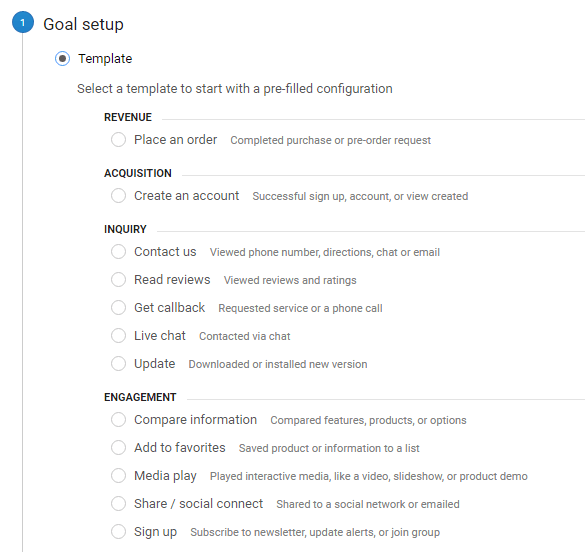What Data Is Google Analytics Goals Unable to Track: Vital Info
What Data Is Google Analytics Goals Unable to Track: Vital Info
Blog Article
Introducing the Blind Attractions: Recognizing What Google Analytics Goals Can not Measure
In the world of digital analytics, Google Analytics stands as an effective device for tracking and assessing on the internet customer interactions. Understanding what Google Analytics goals can not measure is crucial for obtaining a detailed sight of customer behavior and engagement.
Customer Habits on External Operatings Systems
Comprehending just how customers communicate on exterior platforms is crucial for enhancing online methods. Exterior platforms, such as social media networks, reference sites, and on-line discussion forums, play a substantial function in driving web traffic to a business's internet site. By assessing customer actions on these systems, services can get beneficial insights right into the performance of their marketing efforts and the preferences of their target market.
One key element of customer behavior on external platforms is the recommendation source. By tracking where the customers are originating from, services can recognize which platforms are driving one of the most traffic to their internet site. This info can help firms designate their sources better, focusing on the platforms that generate the best outcomes.

Offline Conversions and Interactions
Analyzing individual habits on external systems gives useful insights right into on the internet strategies; nonetheless, taking into consideration offline conversions and communications is similarly necessary for a detailed understanding of a business's general performance. While Google Analytics excels at tracking on-line communications, it falls short in capturing the full consumer trip that typically includes offline touchpoints. Offline conversions, such as in-store purchases or phone queries, play a substantial duty in numerous businesses' success. Overlooking these interactions can cause a distorted view of the efficiency of advertising and marketing campaigns and total service performance.

Attribution Beyond Last Click
When diving right into the realm of digital advertising analytics, it comes to be necessary to look beyond the solitary touchpoint of the last click for an extra thorough understanding of acknowledgment. While Google Analytics gives valuable insights into user behavior, counting only on last-click acknowledgment can be restricting - what data is google analytics goals unable to track. Attribution designs that surpass the last click offer a much more nuanced sight of the customer trip, taking into account all the touchpoints that bring about a conversion
Attribution past the last click permits marketing experts to appoint debt to numerous communications along the conversion path, offering a clearer photo of the performance of different marketing networks. By discovering multi-touch acknowledgment models such as straight, time degeneration, or position-based attribution, companies can better designate their advertising spending plans and maximize their techniques for maximum impact.
Recognizing the influence of each touchpoint in the conversion process is essential for making notified decisions and making best useful reference use of ROI. By welcoming attribution past the last click, businesses can obtain deeper understandings into customer actions and tailor their advertising and marketing initiatives better.
Cross-Device and Cross-Browser Tracking

Likewise, cross-browser monitoring matches cross-device tracking by recording individual behavior as they switch over between various internet internet browsers. Recognizing exactly how individuals interact with websites on different internet browsers can assist online marketers optimize their online experiences to make certain uniformity and functionality throughout different platforms.
Qualitative Data and Individual Intent
Recognizing customer intent with qualitative information analysis is vital for developing targeted digital marketing techniques that reverberate with the demands and choices of the target audience. Qualitative data provides understandings right into the 'why' behind user activities, dropping light on motivations, feelings, and choices that measurable data Visit This Link alone can not my latest blog post catch. By assessing user responses, comments, and communications, marketers can uncover useful info concerning user intent, enabling them to tailor their messaging, material, and offerings to better align with what their target market is seeking.
Qualitative data also assists in understanding the context in which users engage with an internet site or application. This contextual understanding enables marketing experts to create more appropriate and personalized experiences, eventually driving higher involvement and conversion rates. By delving into user intent with qualitative data evaluation, services can gain a much deeper understanding of their target audience, bring about a lot more effective advertising and marketing techniques that fulfill individuals' assumptions and needs.
Verdict
In conclusion, Google Analytics objectives have limitations in determining individual behavior on outside systems, offline conversions, attribution past last click, cross-device and cross-browser monitoring, and qualitative data associated to customer intent. what data is google analytics goals unable to track. It is vital for companies to be conscious of these blind places in order to supplement their information evaluation with other tools and techniques to get a much more detailed understanding of their target market and improve their overall digital advertising approaches
By analyzing individual actions on these platforms, companies can get beneficial insights into the efficiency of their advertising initiatives and the choices of their target audience.
Analyzing customer actions on exterior platforms offers useful understandings right into on-line approaches; however, thinking about offline conversions and communications is similarly imperative for an extensive understanding of a business's general efficiency.In digital advertising analytics, relocating beyond last-click attribution to explore cross-device and cross-browser monitoring is necessary for obtaining an all natural understanding of customer interactions throughout numerous systems and gadgets. By evaluating user responses, remarks, and communications, marketing experts can reveal useful details concerning customer intent, permitting them to tailor their messaging, web content, and offerings to better align with what their target market is looking for.
By diving right into individual intent with qualitative data analysis, organizations can get a much deeper understanding of their target audience, leading to much more effective marketing approaches that meet individuals' demands and assumptions.
Report this page